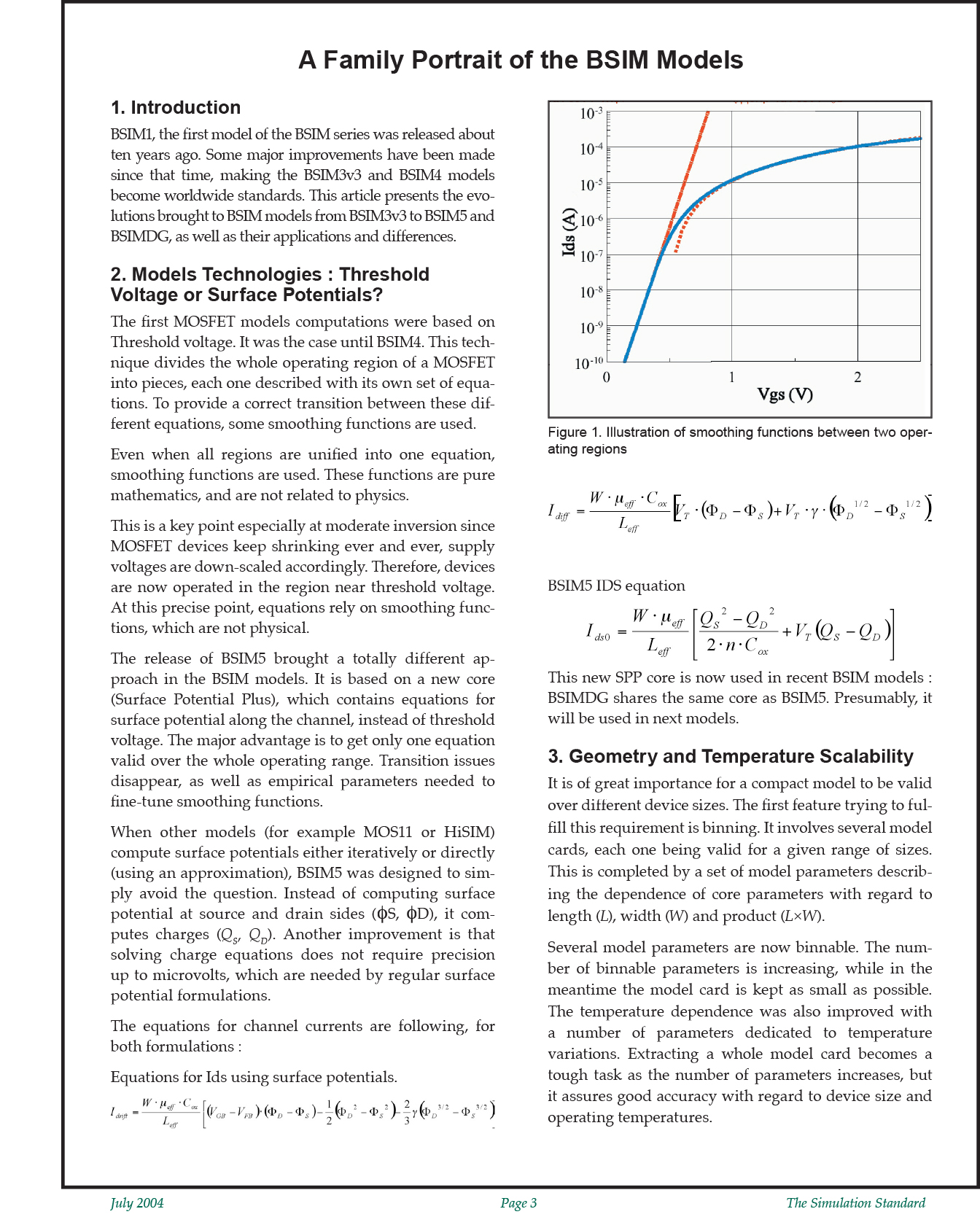A Family Portrait of the BSIM Models
1. Introduction
BSIM1, the first model of the BSIM series was released about ten years ago. Some major improvements have been made since that time, making the BSIM3v3 and BSIM4 models become worldwide standards. This article presents the evolutions brought to BSIM models from BSIM3v3 to BSIM5 and BSIMDG, as well as their applications and differences.
2. Models Technologies : Threshold Voltage or Surface Potentials?
The first MOSFET models computations were based on Threshold voltage. It was the case until BSIM4. This technique divides the whole operating region of a MOSFET into pieces, each one described with its own set of equations. To provide a correct transition between these different equations, some smoothing functions are used.
Even when all regions are unified into one equation, smoothing functions are used. These functions are pure mathematics, and are not related to physics.
This is a key point especially at moderate inversion since MOSFET devices keep shrinking ever and ever, supply voltages are down-scaled accordingly. Therefore, devices are now operated in the region near threshold voltage. At this precise point, equations rely on smoothing functions, which are not physical.
The release of BSIM5 brought a totally different approach in the BSIM models. It is based on a new core (Surface Potential Plus), which contains equations for surface potential along the channel, instead of threshold voltage. The major advantage is to get only one equation valid over the whole operating range. Transition issues disappear, as well as empirical parameters needed to fine-tune smoothing functions.



